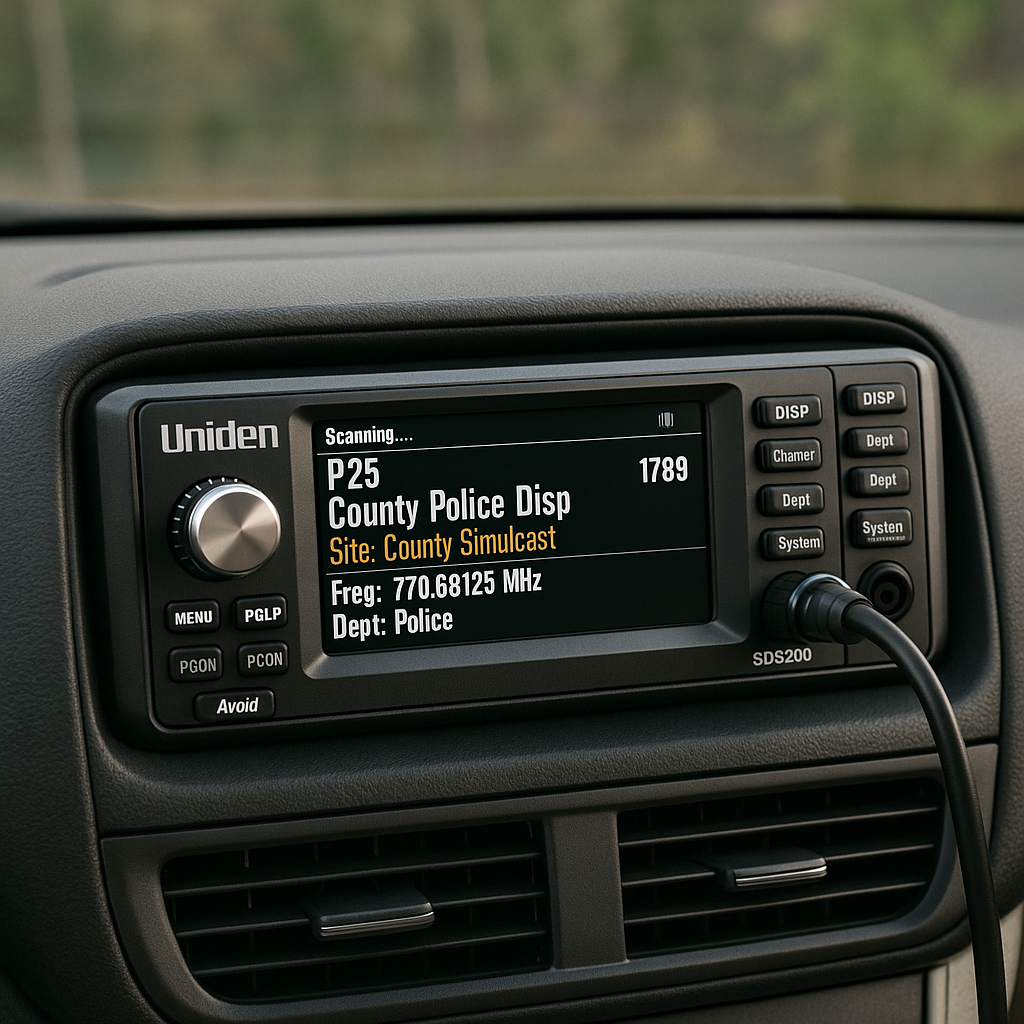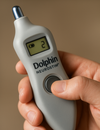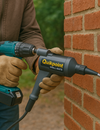
If the Uniden SDS100 is the handheld hero of the scanning world, then the SDS200 is its big, powerful sibling — built to sit proudly on your desk, dashboard, or radio rack.
This thing isn’t just a radio scanner. It’s a software-defined powerhouse designed for the complex digital communication systems used by modern police, fire, EMS, and aviation services.
And if you’ve ever wondered why your older scanner just can’t seem to pick up your local agencies anymore — the answer lies in how radio technology has evolved. The SDS200 is built for that evolution. Let’s break it down.
1. True I/Q SDR Receiver: The Secret Sauce
The heart of the SDS200 is its True I/Q software-defined radio (SDR) receiver — the same revolutionary technology found in Uniden’s handheld SDS100.
Instead of relying on traditional analog circuitry, the SDS200 digitizes signals right at the antenna, allowing advanced digital processing to clean, decode, and clarify transmissions with precision.
That means:
- Crystal-clear audio even in heavy simulcast zones.
- No more dropouts or garbled voices on P25 or DMR networks.
- Better sensitivity on weak or distant signals.
In plain English: the SDS200 hears everything older scanners miss.
If your old analog or digital model struggles with distortion or silence on certain channels — especially citywide systems — the SDS200 fixes that completely.
2. Built for Digital Trunking
So what exactly is digital trunking, and why do you need a scanner built for it?
Traditional (analog) radio systems are simple — one frequency equals one channel. Easy to listen to, easy to scan.
But modern digital systems like P25, DMR, and NXDN use a “trunked” network. In these systems:
- A control channel coordinates communication.
- Units (like police or fire) are dynamically assigned to available frequencies.
- Conversations can “hop” between channels in milliseconds.
The benefits? Better coverage, efficiency, and inter-department communication.
The downside? Older scanners get confused — they can’t follow the conversation as it jumps from one frequency to another.
The SDS200, on the other hand, is built for this. It decodes and tracks trunked digital systems effortlessly, including:
- P25 Phase I & II (public safety systems)
- DMR (used by utilities, schools, and private networks)
- NXDN (common with railroads, local agencies, and business ops)
- EDACS & LTR (legacy systems still active in some regions)
No extra hardware. No extra modules. Just plug, program, and listen.
3. Designed for Simulcast Environments
If you live in a big metro area, you’ve probably hit the dreaded simulcast distortion problem.
Multiple radio towers broadcasting the same digital signal can cause older scanners to “stutter,” miss words, or decode nothing but noise.
The SDS200’s True I/Q receiver is simulcast-proof.
It locks onto multi-tower transmissions perfectly, so you get clear, consistent reception — the kind of clarity professionals depend on.
This is one of the main reasons both hobbyists and emergency service monitors upgrade to the SDS200. It’s simply one of the few consumer scanners that can handle simulcast systems right out of the box.
4. Big Display, Big Performance
The SDS200 isn’t shy about its looks — and that’s a good thing.
It features a large, full-color display that shows:
- Channel name and frequency
- System and site info
- Modulation type
- Signal strength
- Talk group IDs
- And even customizable color alerts
You can easily see what’s happening across multiple systems at once, even from across the room or in a vehicle dashboard setup.
The interface is intuitive, clean, and built for real-time awareness — a major upgrade from older monochrome displays.
5. Ethernet Connectivity & Streaming
Here’s where the SDS200 really separates itself from handheld scanners like the SDS100.
It has a built-in Ethernet port, which opens up a world of possibilities:
- Remote streaming: Monitor your scanner from anywhere over the internet.
- Control via PC: Use third-party software like ProScan to manage and stream audio.
- Integration into base setups: Perfect for dispatch centers or amateur radio control hubs.
It’s the dream setup for anyone who wants a base or mobile scanner that can also serve as a remote monitoring station.
You can leave your SDS200 running at home and listen in from your laptop or phone while traveling.
6. Built for Base or Mobile Use
The SDS200 fits comfortably in both worlds:
- On your desk or radio table, it serves as a reliable base scanner.
- In your vehicle, it mounts neatly into dashboards or radio racks.
With 12V DC power, a sturdy metal chassis, and front-facing speaker for loud, clear audio — it’s perfect for both stationary and on-the-go monitoring setups.
And yes, the sound is phenomenal. The larger speaker and advanced digital audio processing give you crisp, powerful output even in noisy environments.
7. Easy Programming and Updates
Programming the SDS200 is refreshingly simple thanks to Uniden’s Sentinel software (same as the SDS100).
You can:
- Load frequency databases by zip code
- Customize favorite lists
- Update firmware and digital mode libraries
- Back up your configuration in seconds
And since Uniden regularly updates its database, your SDS200 stays ready for new digital systems and frequency changes.
8. Why Older Scanners Struggle
If you’re still using a pre-SDR digital scanner like the BCD996P2 or 436HP, you’ve probably noticed:
- Dropped signals
- Garbled audio on P25 Phase II systems
- Missed transmissions in simulcast areas
That’s not your fault — it’s just old hardware design.
Traditional scanners use fixed analog intermediate frequencies (IF stages) that can’t handle modern digital distortion patterns.
The SDS200’s software-defined radio architecture fixes that by processing the entire RF spectrum digitally — just like professional communication receivers.
It’s like upgrading from a flip phone to a smartphone. Same idea, totally different power.
Final Thoughts
The Uniden Bearcat SDS200 is more than a scanner — it’s the future of radio monitoring in a world dominated by digital and trunked systems.
With its True I/Q SDR receiver, full digital protocol support (P25, DMR, NXDN, EDACS), simulcast-proof performance, and Ethernet streaming, it’s the ultimate base/mobile scanner for anyone serious about reliable communication monitoring.
Whether you’re a hobbyist, storm spotter, journalist, or just love listening to the airwaves, the SDS200 is the one that hears it all — clearly, consistently, and from anywhere.




